Designed and submitted by Franklin Knisley, the Narrow Tilting Vehicle with Non-Tilting Wheels (NTVNTW) is pioneering in the field of tilting vehicles, in that the wheels remain flat on the ground and do not compromise adhesion during cornering and braking to obtain a tilting motion. To this day, Ernst Neumann-Neander’s 1940’s tilting three-wheeler has been patterned after by all others, whether they are a 3 or 4 wheeled version.
Secondly, the NTVNTW not only tilts its cabin to improve the occupant’s comfort and fun factor but it simultaneously moves its “upper chassis” laterally to counterbalance the “undercarriage” and have the cornering forces, which affect their combined centers of gravity, to be continuously directed at an imaginary axis at the ground, and at the very center of the wheel(s), to have the cornering loads equally distributed. [Pre-Order]
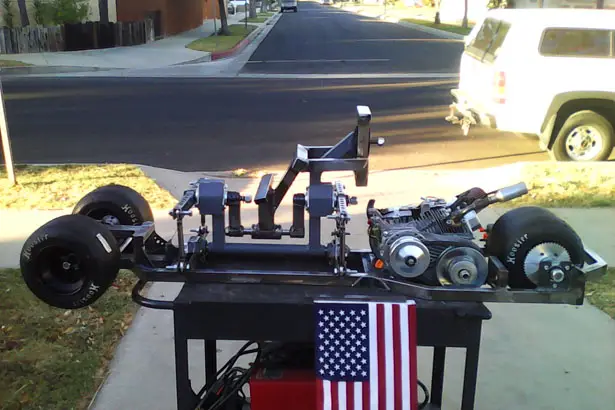
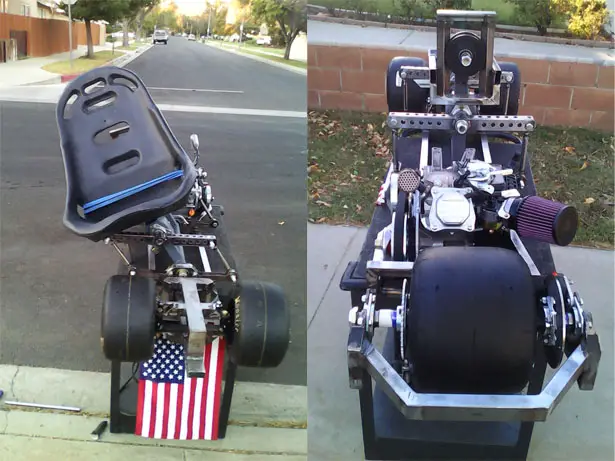
This vehicle formula can be scaled from a small personal scooter type vehicle to tilting high speed trains, but with special emphasis on a sporty tandem two-seat reverse trike hybrid model. As traffic congestion is a worldwide problem that will only get as population increases in a world of limited infrastructure, especially in the cities. The solution is the NTVNTW. The benefits of such a vehicle include having the best of both worlds between a car and a motorcycle.
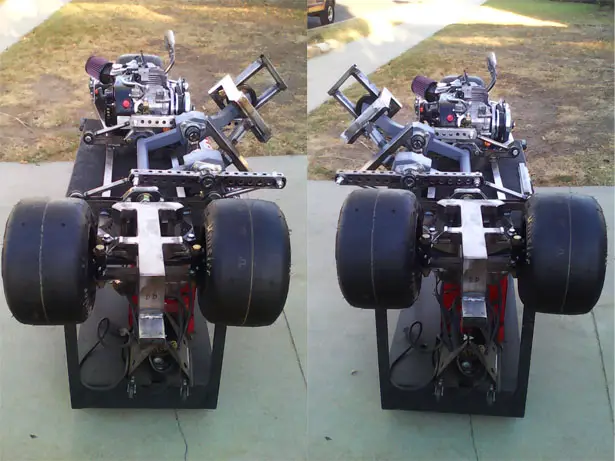
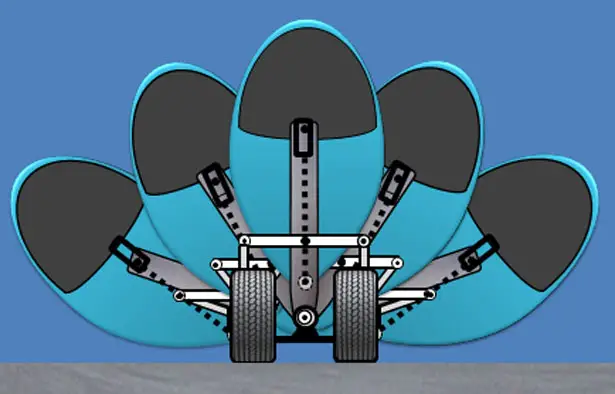
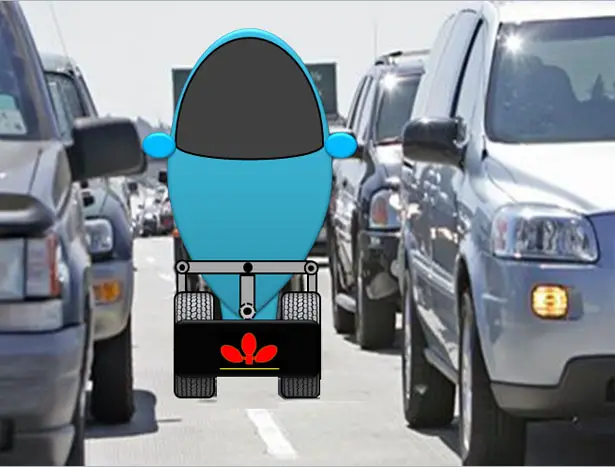
(1) By being narrow, you can fit up to 5 vehicles in two car lanes, with one NTVNTW lane-splitting on straightaways. In the turns they would need staggered formations to not lean outside the lane, as cornering speeds increase and turn radii sharpen. The NTVNTW (shown) is in a state of equilibrium, while cornering at 1.25g’s, as indicated by the lean angle of 52 degrees. Without staggering of vehicles, it would be necessary to widen the lanes, but only in the turns, of those two express lanes. Thus doing away with the expense and delay in widening the whole roadway to more than double the capacity.
(2) By being narrow, a streamlined vehicle would require less energy to poke a hole in the wind, and thus would be more efficient.
(3) By having non-tilting wheels, more rubber meets the road for more stability and better braking, especially in a reverse trike, for a 1.25g+ level skidpad cornering ability, as designed, to exceed that of today’s sports cars.
(4) An enclosed cabin provides: (a) weather protection, (b) safety protection with cage and seat restraints, (c) less noise.
(5) A perfect platform for EV or Hybrid application to reduce the environmental impact of more and more vehicles on the road, as well as a good platform for autonomous vehicles in the not so distant future.
(6) A national defense application exists as an Army mule (fuel, ammo, water, food), ambulance or fighting vehicle that can maneuver through smaller trails and on hillsides.
DREAMS PLUS ACTION = REALITY. It is Franklin Knisley’s desire to share his dreams with the world, now that he believes that he has perfected his design since his first four-wheeled 1983 prototype. Shown on a steep embankment, where there too, it was counterbalancing the suspension for even a tire contact.







